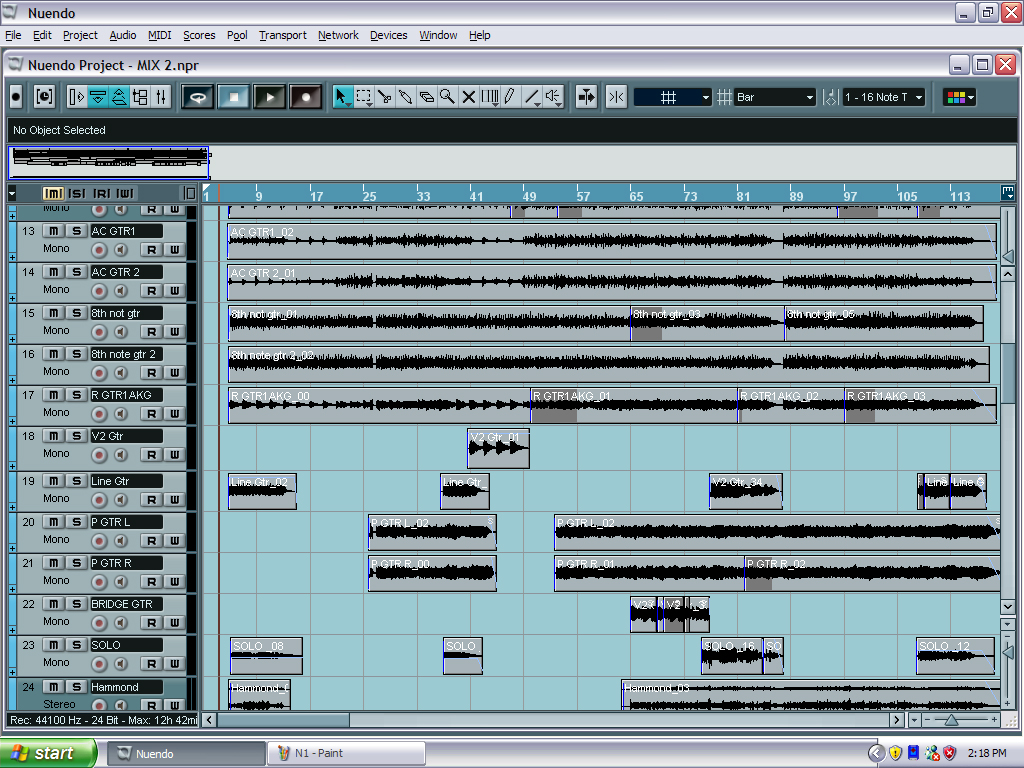Less Is More, But Not When It Comes to Tracking Guitar Parts

Something you may be surprised to hear is that it is often very common to have as many as 10 to 15 guitar tracks on a single pop/rock song!
Here's what the rundown might be:
1. Basic crunch guitar track left side; played on intro, pre chorus, chorus and bridge
2. Same on right side with different guitar and amp or emulator
3. Clean single coil left side; played on verses, bridge and outro (pos.4 strat)
4. Same on right side; same gtr but probably use a different pickup combo (pos.2 strat)
5. Center guitar on pre chorus a bit heavier than tracks 1 and 2
All the latest guitar news, interviews, lessons, reviews, deals and more, direct to your inbox!
6. Huge guitar left side on chorus, bridge and outro
7. Same on right side but most often mic position is moved back a bit or even a bit more
8. Verse 2 guitar; common practice to add a new guitar part on verse 2 to add ear candy and keep attention. Usually with a special effect, could be a feedback or trem part. ...
9. Acoustic guitar on left side added on chorus or verse to add a nice percussive jangle.
10. Same on right side.
Now, what I have just written is not always the case, but it is not uncommon. I would say that better than 60 percent of songs I have played on have me doing that treatment for RHYTHM only! (I know, it's a world gone mad, and sometimes less really is more ... just showing you what I am required to do.)
Here's a quick video of a current session:
Now what about the solo tracks? ...
I like to setup three to five tracks for solo guitar parts. Here's why: Two tracks I assign to bounce between for the main parts. That way I can crossfade between them and make an extended solo sound like I played it all in one take.
I also like to have a track or two ready for harmonizing lines in the solo -- ear candy. Finally, I like one extra track at a minimum (usually two) for special little diddy guitar parts. More ear candy!
Here's a video of a typical lead guitar part:
We do not do this just because we can. We do this when we choose it to be the right treatment for the song. I have had many days where one acoustic is all that is necessary. But even on those days, as much is given, and maybe more, to choose the perfect mic or mics, preamp, compressor, mic placement and most importantly PART to play.
Till next week…
Ron Zabrocki
Ron Zabrocki on Ron Zabrocki: I’m a session guitarist from New York, now living in Connecticut. I started playing at age 6, sight reading right off the bat. That’s how I was taught, so I just believed everyone started that way! I could pretty much sight read anything within a few years, and that aided me in becoming a session guy later in life. I took lessons from anyone I could and was fortunate enough to have some wonderful instructors, including John Scofield, Joe Pass and Alan DeMausse. I’ve played many jingle sessions, and even now I not only play them but have written a few. I’ve “ghosted” for a few people that shall remain nameless, but they get the credit and I got the money! I’ve played sessions in every style, from pop to jazz.
